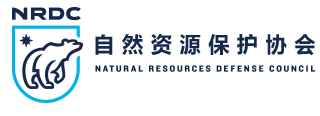Xie Zhenhua—China’s special envoy for climate change affairs—recently emphasized that China’s investments under the Belt and Road Initiative will be green and low-carbon. While more still needs to be done to achieve this vision, it’s clear that China has every reason to reduce emissions and promote low-carbon development in BRI countries for the following reasons:
Climate change affects us all, including China. China is one of the most vulnerable countries to climate impacts. As emissions increase in other countries, China will suffer with the rest of the world. Because of this, it is in China’s own interest to promote green and low-carbon development in BRI countries. After all, as former U.N. Secretary General Ban Ki-Moon has said, “Climate change knows no boundaries.”
China can earn both profit and reputation by promoting renewables and energy efficiency in BRI countries. China is the largest manufacturer and exporter of solar panels, and its support for renewables has dramatically reduced the price of solar around the world. It is also leading the way in energy efficiency. The country is keen to bring its extensive expertise and best practices in renewables and energy efficiency to BRI countries.
China’s experience has demonstrated that tackling climate change doesn’t work against economic development and has enormous co-benefits. Some countries worry that tackling climate change will negatively impact their economies. According to Xie Zhenhua, China’s experience shows that this is not the case. Between 2005 and 2018, China's GDP almost doubled, and it lifted 170 million people out of poverty. According to IRENA report, China has the most renewable energy jobs, almost 4 million in 2017. China’s energy-saving, emission reduction, and low-carbon policies and measures have co-benefits such as pollution reduction and higher-quality economic growth, experiences China can share with other countries.
How do we promote low-carbon development in BRI countries? This requires collaborative efforts from both within China—by greening finance and overseas investment policies for BRI projects—and in BRI host countries—by promoting stronger clean energy and environmental policies that provide favorable market environments for China and other countries to make green investments in clean energy. Specifically, BRI countries could strengthen the environment for clean energy through the following approaches:
Conduct Integrated Resource Planning for their power systems, to bring in renewables and energy efficiency resources as much as possible in the planning stage. BRI countries can follow international best practices such as integrated resource planning, i.e., optimizing both supply side power resources and demand side management and energy saving resources. By doing so, they can build power systems that are safe, efficient, economic, pragmatic and low-carbon.
Recognize and make the most out of renewable resources. ASEAN countries, for example, have the advantage of abundant natural resources of renewable energy. Wind resources are concentrated in Vietnam, Laos, Thailand, and coastal areas in other countries; among these, Vietnam boasts the richest wind resources. Solar energy has a great potential as well, as the total solar radiation in most ASEAN countries and regions is greater than 1,750 kWh/m2. With its superior resource endowment, ASEAN countries have natural advantages for renewable development in the future.
Strengthen relevant RE policies. Favorable incentive policies, such as RE feed-in tariffs (FiTs), can attract more investment in renewables, thus promoting its development. Although there are policies for electricity prices, taxes, subsidies, etc. to encourage renewables investment, many BRI countries' incentive policies are not favorable enough for renewable energy and have not provided sufficient incentives for investors.
Make smart decisions and avoid high pollution, high carbon lock-in. While building coal power plants may seem like the easiest and cheapest option, they bring with them significant environmental and climate pollution and imacts on public health. Countries should focus on renewables and energy efficiency to reduce these impacts.
Leverage green finance. Greening finance can shift more funding towards clean energy and restrict polluting, high-carbon investments. BRI countries should incorporate green finance tools into their national strategies and policies. Environmental and social risks should be evaluated when considering which projects should be financed and managed during and after projects are built. Environmental information disclosure should also be improved to ensure that projects are meeting the standards they are required to meet.
Greening the Belt and Road Initiative will require China and host countries to work together to prioritize green, low-carbon projects by setting higher standards for projects and developing policy and market environments that prioritize renewables and energy efficiency over fossil fuel projects. China and BRI host countries have much to benefit from this, including reducing pollution and creating new economic and job development opportunities for their citizens.


